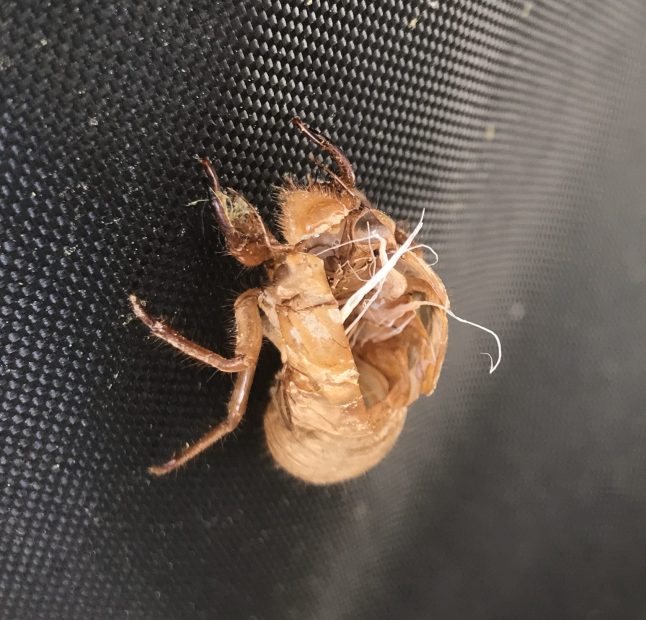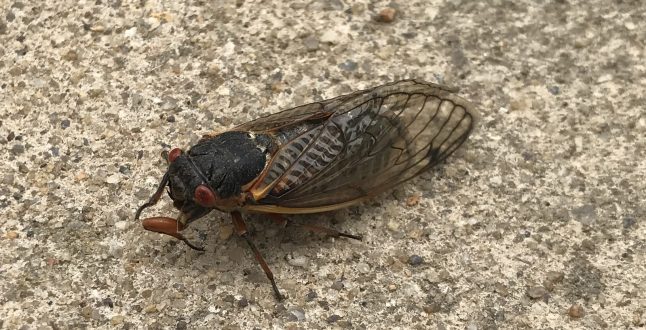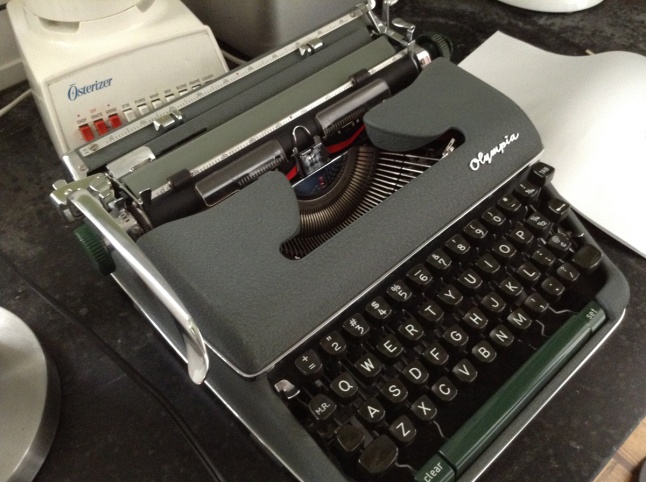J. is a local typewriter enthusiast who brings me problem typewriters from time to time. She doesn’t just admire her lovelies on a shelf, she works them hard, typing daily. Her Olympia SM3 below is beloved. Not only does it look truly scrumptious with that box-o-chocolates keyboard, it types like an Olympia—that is to say, like a mechanical dream.
This Olympia, however, has a problem. The carriage won’t move.

J. is a very resourceful gal and has figured out a work-around. She engages the caps lock to free the carriage and types in ALL CAPS. She loves this typewriter so much, she will type in ALL CAPS if need be.

When J. told me about this situation and her solution, I thought to myself: sounds like the notorious Olympia Bad Rubber Washer/Spacer/Bushing Problem.
So, let’s take a look. All four rubber washers that pad between the machine guts and the outer casing were mashed into disintegrating blobs of tarry goo. Once the rubber flattens, the machine guts sink and the carriage starts rubbing or grinding or stalling on the casing. Engaging caps lock raises the carriage and allows it to move freely. Unfortunately, few people other than J. will want to type in ALL CAPS.
It looks like someone added modern washers on the outside of the case when the inside rubber disintegrated and the screws got looser and looser.

Typospherians have documented this very common situation with Olympia SMs. It is a well known problem with a “One Weird Trick” solution. When I see this condition, I think about a ten-year-old blog post at clickthing which I am sure has helped many, many Olympia SM owners over the years.
http://clickthing.blogspot.com/2011/03/amazing-floating-olympia.html
Duane at Phoenix Typewriter has a good video that details the fix on Brownie’s twin sister:
Duane cuts his own spacers from rubber tubing and Richard Polt has used flat pieces of rubber. Me, I use rubber washers similar to these.
Though I had bought some rubber washers at the local hardware store, I decided to use the extra washers that I found on the exterior of the case. The washers are about 1/8″ thick and looked brand new. I am guesstimating that the outer diameter of these washers is about 1/2″ to 5/8″ and the inner diameter is 3/16″ to 1/4″.
The old washers, melted and compressed, glued the machine to its casing, so I had to pry the frame from the case with a screw driver and pick out the old rubber.


I took clickthing’s advice and swapped out the four rubber washers one at a time so that I didn’t need to futz with lining up the holes on all four washers and screws at the same time. Here is a new washer going in:

That looks very good—1/8″ or somewhat thicker seems to be a good size:

It is a truth universally acknowledged, that an Olympia SM sitting a bit too low, must be in want of new rubber washers.
I tested, and all was well. I was able to type in lowercase, and there was no carriage scraping or stalling on the casing.

Gosh, this Olympia is so nice. Why don’t I own an Olympia SM3/4 portable? They come to me, and I always let them go. I used to complain that the carriage shift was too heavy for my delicate lady paws. Heck, if J. can type in ALL CAPS for the love of an Olympia, I can suffer the occasional carriage shift. Therefore, be it resolved: the next Olympia SM3/4 I run across, I’m going to keep for a little while.
While I was working in the garage, I heard the sound of a siren. I opened the garage door and peeked out. The sound became a hot shriek. There’s something funny going on out there.


Calm down, Olympia. No need to shout. I fixed your washers!

Those are members of Brood X, an enormous group of periodical cicadas. Here in the eastern US, they crawl out of their holes every 17 years to eat, mate, and have babies—all while making an insane racket. They are numerous and noisy, but harmless.
https://en.wikipedia.org/wiki/Brood_X

The molted exoskeleton of the 17-year periodical cicada

Looking to get lucky
I’m actually happy to see them. I saw them last in 1987 and have been eagerly anticipating their 2021 arrival. Far from feeling like a biblical plague, they are a comforting reminder that ancient cycles continue despite global pandemics, human dumbassery, and whatnot.
After All
I am a 15-month cicada, slowly coming out of my shell now that I have gotten my second dose of the Pfizer vaccine. Like many around me, I’m crawling out of the pandemic hole and looking about hopefully. This summer, I’ll see many friends and family for the first time in a while. My son arrives from California next week for a long visit. I haven’t seen him in-person since Christmas 2019.
Walking around the neighborhood, I see a lot of masks on the ground, a trashy human version of molted cicada husks. I have been taking pictures of them because I don’t want to forget what the last year has been like. We humans are so flighty and forgetful. I don’t want this experience to fade into the mists of time with nothing learned.













This is one of the most satisfying typewriter repairs: the cause of the problem is clear, and the solution makes such a great difference.
Here in Cincinnati, too, the cicadas are out and so are the vaccinated people. Mask litter is, somehow, an emblem of this period in history.
LikeLiked by 1 person
I was a little worried for the cicadas because we had a cold snap right before they were scheduled to emerge, but they seem to be coming out in decent numbers. I understand that some people are taking cicada-centric vacations to visit them while they’re out. I have fond memories (not being sarcastic here) of the 1987 emergence I experienced while living in DC.
LikeLike
Congratulations on the repair. I don’t recall how many SM3 & 4s I’ve repaired with the same problem.
The nice thing is the many work-arounds when one cannot find proper bib washers. I agree with Richard, it is one of the most satisfying repairs, especially when one brings a machine in with a carriage problem, and it can be readily repaired. There is an easy adjustment to the counterbalance springs to make the carriage shift nice and light which makes the SM3 and SM4 some of the best Olympia typewriters out there.
We’ll soon be seeing the cicadas in a few weeks. I’m far enough North things happen about 2 weeks behind most of the USA. I remember these from my boyhood in PA. Such fascinating creatures.
LikeLiked by 1 person
It is satisfying. I was going to cut flat pieces of inner tube to size or use fuel line hose à la Duane if I couldn’t find correctly-sized rubber washers.
I’m going to look for an Olympia SM and fiddle with the springs to see if I can get the shift to my liking.
I didn’t know the cicadas went so far north into your neck of the woods. We are really enjoying them here in the DC area.
LikeLike
Heh, if a machine is to have one weakness, the SM washer bug isn’t such a bad one, eh? 😀
Still, a thing to watch out for is using washer that are *too thick* – because the case latches hook into the frame, not the shell, so if the frame sits *too high*, the machine won’t latch into the case properly.
LikeLike
Thank you Ted, that’s an excellent tip! I just did a few quick checks of four machines, and it seems the answer may depend on the model, the case, and of course the feet are part of this equation as well! It seems my 5mm is right on the edge of “too thick”, it worked fine on my Olympia Monika in it’s case, and trying two SM4’s (with 5mm spacer) in a case containing an unmodified well-fitting SM3, one SM4 latched one foot but not the other, the other couldn’t latch either. Both have old feet too, so likely at least slightly shrunken. So, I need to redo this. I was only shooting for the high side to be sure the scraping never returned. Sounds like the correct answer is somewhere between 3 and 4mm. When I have time I will experiment with this.
LikeLike
I was wondering what the washer thickness limit was – very, very good to know! 1/8″ thick (3.175mm) seemed thick enough to raise the carriage. This particular typewriter has no outside case to test latching.
LikeLike
After reading your comment I took my calipers to the hardware shop and found some 4.5mm washers which worked perfectly 🙂
LikeLiked by 1 person
Nice typewriter, repair, and cicada story! I have not heard or spotted any here in Northern VA yet. I have repaired 3 Olympia SM machines of mine, I tried to match it perfectly in a 3D printed spacer but of course the height is unknown (anybody find this documented anywhere?). I found 5mm (~0.2″) to work great, FYI, there must be a range of acceptable spacer height that works.
LikeLike
I see you noted Ted’s comment about the limits of washer thickness and latching issues. I used 1/8″ thick (3.175mm) washers, but this typewriter has no outside case with which to test latching.
I am surprised you haven’t seen (or heard) the cicadas yet – you must be in one of the cooler, further-flung Northern VA suburbs. Here in Arlington on the east Falls Church border, the cicadas are out in full force.
LikeLike
I bought my SM3 from an honest online seller who noted a problem with the typewriter (pointing out that it typed fine in all caps). After replacing the rubber spacers, and adjusting the tension on the carriage-shift to my liking, the operation of the SM3 once again matches its like-new looks and I’m a happy camper.
I can recall pulling the empty cicada shells off of tree trunks when I was a kid. They would cling to the clothing of an unsuspecting recipient if placed there carefully.
LikeLiked by 1 person
I wonder how many all caps Olympias are out there, waiting for their new rubber washers.
LikeLike
If you come across a second SM3 let me know, I am in search of one as well! After you find yours of course!
LikeLike
Will do!
LikeLike
Always a great pleasure to read your posts. I was reminded to check out my Olympia SM3, and sure enough, I need to change the rubber washers, so thank you. The closest thing to the cicada emergence I have ever seen in the UK was a field of cockchafers, which have a similar habit of all appearing at once and then fly about; the large beetles have a deep throaty buzz which can be a bit alarming, but I thought it was great 🙂 Getting my second Astra Zeneca vaccine very soon, a huge relief.
LikeLiked by 1 person
I was completely unfamiliar with cockchafers and had to google them. I’ve heard the term “doodlebug” – now I know what it refers to. Fortunately our cicadas are pretty benign. There’s a lot of them and they make a lot of noise, but they don’t do much or any damage.
Good to hear that your second AstraZeneca dose is on its way. This summer is going to be so bananas. I saw a funny tweet the other day that said “Losing my debit card in a bar is so close I can taste it.” 😀
LikeLiked by 1 person
So fun to read about the repair of my delicious “chocolate brownie” Olympia! Very grateful for Mary’s skill, generosity & writing style! She keeps my typewriters working like well oiled machines and keeps me laughing at what she writes! Thanks 🙂
(note: Don’t use oil! Only mineral spirits.)
LikeLike
Jean, you’re a doll for letting me play with all your typewriters.
LikeLike
You are fun.
LikeLiked by 1 person
Been a while since your last post. I’ve found them informative and helpful as I get into the hobby, jumping in with both feet. Your Praxis posts have given me hope I might get the one I have to work! I hope you are well will be writing again. Thanks for the interesting reads.
LikeLike
Thank you for reading along. Family and work have pulled me away from my typewriter workbench these past few months. However, I am currently finishing up a project and will be posting in the next week or so. Stay tuned!
LikeLike
Hello! I recently purchased an Olympia SM 3; all in good shape, it seemed, just needed cleaning and a new ribbon. So I did both, PLUS changed out the old squished washers (new ones are 3/8″). Now here’s the problem: the carriage does not move — not when typing lower case, now when typing upper case, not when hitting the space bar. Perhaps I need to change out the washers — either thicker or thinner?
LikeLike
Hello Leo! Olympia SM are such fantastic typewriters – congratulations.
Make sure that your carriage is unlocked. There is a little locking lever on the top left side of the keys – in this picture next to the += key:

If the carriage is unlocked and you can move the carriage using the carriage release, you might have a broken or disconnected drawband/drawstring. Look for telltale loose or broken string under the carriage. In this picture of a more modern SM, the broken band is loose and tangled:

You may see broken or loose string instead of a band.
I hope this helps as you try to get to the bottom of this unmoving carriage.
LikeLike
Thank you for your suggestions here. But I have already released the carriage, and I see no damage to the string-cord. This problem has me stumped. I think I’m going to change the bushings. Maybe the new ones I installed are to thick or too thin.
LikeLike
Here’s a good video about changing those rubber washers – you can see what size Phoenix Typewriter uses (I think he says they are about 1/4″ thick):
LikeLike
Hooray! I wasn’t even searching for a solution for my scraping SM3—and here it is. Faucet washers were already on hand, so this is one of the most effective simple repair jobs ever. Much appreciated!
LikeLike
I am so glad that this was helpful – an incredibly simple and satisfying repair.
LikeLike
VERY helpful, yes — and VERY satisfying. For what it’s worth, I’ve written up my experience, with appreciation for your post: https://hoc.uspoc.us/2023/simple-if-you-know-about-it/
LikeLiked by 1 person
Just cleaning up a new to me SM3 for service & encountered this same issue after putting her back together…lo & behold, melted washers. Glad it’s a simple fix! Thanks for your incredibly helpful & delightfully written posts 🙂
LikeLike
Hi Pamela – so happy to hear you found the post helpful. Replacing the washers on an Olympia portable is such a satisfying fix.
LikeLike